With the definition of borderline high-blood pressure changing this week– you could be at risk …at risk of being prescribed a blood pressure lowering medication.
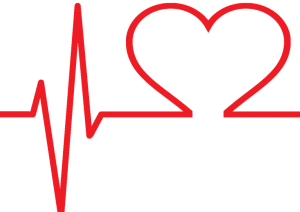 Blood pressure medications like beta-blockers are already on the list of treatment options for migraine patients and often considered when blood pressure is borderline high.
Blood pressure medications like beta-blockers are already on the list of treatment options for migraine patients and often considered when blood pressure is borderline high.
Just this week, 11 major groups like the American Heart Association have lowered the definition of “elevated blood pressure” from 140/90 to 130/80 after reevaluating the risks associated with high blood pressure and heart disease– this change is estimated to double the number of women under 45 to fall into this bucket!
Whether this will affect the prevalence of beta-blockers being used for migraine prevention remains to be seen.
Video from the Washington Post Article that is causing an uproar today: The American Heart Association, the American College of Cardiology and nine other groups redefined high blood pressure on Nov. 13. (Melissa Macaya/The Washington Post)
The good news is the change is supposed to be coming with a push to educate people about lifestyle options when they are in this newly defined range!
“An important cornerstone of these new guidelines is a strong emphasis on lifestyle changes as the first line of therapy. There is an opportunity to reduce risk without necessarily imposing medications,” said Richard Chazal, the immediate past president of the American College of Cardiology.
When weighing your options with your doctor, please discuss whether you’ve fully explored lifestyle measures. The lower ranges are actually an opportunity to identify a potential upwards trend and take action before things are too late.
So what can you do? There are 4 completely non-controversial biggies:
- What you eat
- What you don’t eat
- Exercise
- And, of course, our frenemy Stress
#1 What you eat:
The Mayo Clinic’s website recommends eating a diet that is rich in fiber – with lots of fruits and veggies to lower blood pressure by as much as 14mmHg… followed by a statement that “It isn’t easy to change your eating habits…”
Wait a minute.
What’s easier?
Changing what is on your plate or taking a pharmaceutical every day for the rest of your life?
While they may offer relief from a debilitating problem, these medications come with side effects that cause many to want to reduce their long-term dependence. Plus taking a medication ignores the question of what is causing these symptoms in the first place. What is the body reacting to that is causing this problem and what can we do to relieve it of this stress?
Just so you know, the frightful side effects of beta-blockers include:
- Dizziness.
- Weakness.
- Drowsiness or fatigue.
- Cold hands and feet.
- Dry mouth, skin, or eyes.
- Headache.
- Upset stomach.
- Diarrhea or constipation.
 How does that extra serving of broccoli sound now? Try to increase the average number of veggies you eat in a day each week until you get to at least 7 per day.
How does that extra serving of broccoli sound now? Try to increase the average number of veggies you eat in a day each week until you get to at least 7 per day.
Join a CSA, try the Whole30, start a competition at work, start an accountability challenge on Instagram…do what it takes – you won’t believe how good you can feel ‘till you try it.
#2 What you don’t eat
If you’ve been around anyone watching their blood pressure, you probably know one of the first things to go is “sodium.”
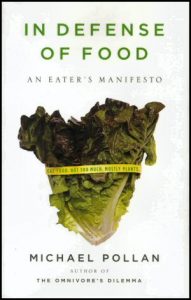 I remember when my Great-Grandma used to eat low-sodium crackers because she was watching her blood pressure. (I guess it was working since the fact that I remember my Great-Grandma fixing us lunch in her own house means she lived a long and independent life).
I remember when my Great-Grandma used to eat low-sodium crackers because she was watching her blood pressure. (I guess it was working since the fact that I remember my Great-Grandma fixing us lunch in her own house means she lived a long and independent life).
We’ve all heard that cutting back on salt can help people with high blood pressure – according to the Mayo Clinic article – by as much as 8 mm Hg.
But rather than reaching for the “low sodium” versions – do yourself a favor all around and eat fresh, whole foods instead of packaged processed foods. For the same 4$ you spend on a box of crackers, you can buy a head of cauliflower. If you are reading this on your smartphone, which my analytics say about 67% of you are – there’s no excuse. Read Michael Pollan’s In Defense of Food if you aren’t already on board with this “real food” thing.
#3 Exercise
Walking, dancing, swimming or otherwise being active for a mere 30 minutes a day could lower your blood pressure by 4-9 mmHg, according to the Mayo Clinic. This could be your wake-up call to get back on the bandwagon (consistency is king to crazy workouts in this case).
Are you keeping score? That’s some significant improvements to be gained just from diet & exercise!
And we haven’t even gotten to the big one – how many times in the movies have we see a character say – “Oh! Don’t get worked up honey, your blood pressure!”. This cliché brings us to…
#4 Reducing stress
Many websites like WebMD or pamphlets from the doctor’s office tell us to simply cut back on stress…if only there were an on-off switch!!!
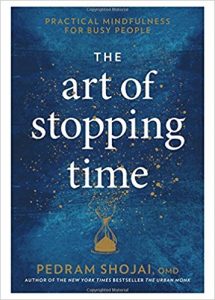 There are however, hundreds of tiny practices and small changes we can make to shift our perspective, shift our physiology and really shift the way we relate to the world. Need some inspiration? Check out Pedram Shojai’s The Art of Stopping Time which has 100 of these micro-practices for you to try.
There are however, hundreds of tiny practices and small changes we can make to shift our perspective, shift our physiology and really shift the way we relate to the world. Need some inspiration? Check out Pedram Shojai’s The Art of Stopping Time which has 100 of these micro-practices for you to try.
I kind of cringe to admit how bad it was, but I used to be high-strung and frequently irritable or tense. I remember people asking me if I was okay because I ‘seemed tense’ (P.S. I don’t know a better way to annoy someone who is already stressed).
Today I sort of laugh to myself when people tell me what a calming presence I have and how they feel more relaxed just being with me, because it’s almost hard to believe how much has changed. But of course, this shift didn’t “just happen” – it took consistent baby steps in the right direction.
Some examples of what helped me “chill out” include self-care practices like:
- Breathing exercises
- Inner-balance biofeedback
- A variety of yoga practices
- Clearing out biological stressors like food sensitivities and heavy metal toxicity
- Therapy and life coaching
- EFT Tapping
- Enneagram coaching
- Ayurvedic practices for my dosha imbalances
- Learning Reiki and different meditation techniques
- Daily walks
- Affirmations
- Aromatherapy
- Gratitude journals
- Making time to laugh
Much of this you can pick up in our Ultimate Migraine Relief Course, which teaches you the self-care techniques and systems to stop a migraine at it’s earliest warning signs.
In Conclusion
Now to wrap things up – clearly I’m no doctor and this clearly is not medical advice. Only you and your doctor can decide what the right path is for you and whether blood pressure medications may help you live a healthy happy life, but I offer these thoughts because realistically your medical provider may not have time to sit down and have a long in-depth talk with you about your habits and lifestyle.
Most of the doctor’s office pamphlets and handouts I’ve seen on healthy living are underwhelming and uninspired – so it’s no wonder we look to more drastic measures right from the start.
These kinds of foundational lifestyle changes are PROVEN to have an effect are published all over even the most mainstream of health sites…however… with such a lack of enthusiasm that it is easy to dismiss. Don’t dismiss the POWER you have to create a healthy lifestyle.
So have an honest look at the lifestyle factors that are in your control and talk with your doctor about a comprehensive plan to achieve a healthy blood pressure.
If you feel like you could use some support in making some of these shifts and sticking to them – well that’s where health coaching can be hugely beneficial. Start with a Case Review and decide if Migraine Freedom™ health coaching is right for you.
Tried everything and still getting migraines?
A trained Migraine Freedom™ Coach can help!
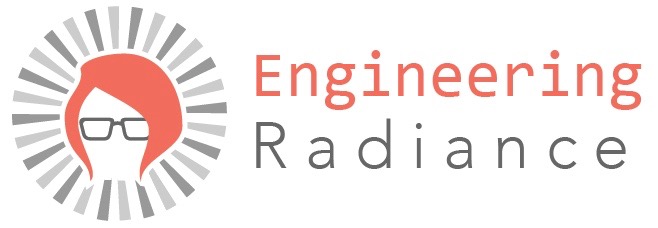
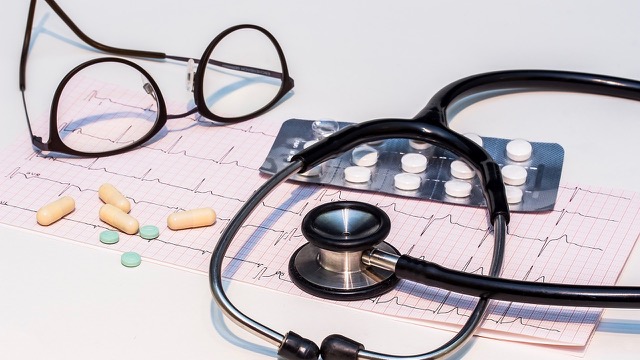

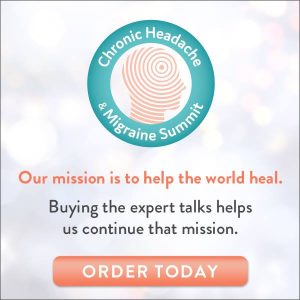
Great article. I will share that in my experience very few doctors have ever talked with my clients about lifestyle and nutrition issues that affect blood pressure. I am dubious but hopeful that they really will begin do this. Sadly I think it means a lot more people will wind up on medication as the easiest choice.
I have been on all the different types of blood pressure pills for short amounts of time. …Or until the side effects kicked in, some of which included sky high blood pressure and risk of stroke – which was listed as a side effect. No thanks. I watch Dr John Bergman on youtube on blood pressure. He is brilliant. After watching his video you will see why there is no logic in blood pressure pills. I suspect the reason for lowering the BP requirement is to capture more people into buying more harmful pharmaceutical chemicals. The rest of the world has a much higher limit!
I also watch a lot of Dr John Bergman videos. He is the best. I had insomnia and one doctor tried to put me on anti-depressants. I refused. Instead, I did everything he suggested and now I sleep like a log and my BP is also fine. Sleep is so important for health.
Thanks. very much for this article, especially for your listing of beta blocker side effects. I have been fortunate to have borderline low blood pressure all my life, so I don’t think the new guidelines will affect me. However, I do have experience with negative effects of beta blockers, from Inderal prescribed by a neurologist to try to reduce my migraine frequency. I was feeling so exhausted that the neurologist sent me to an endocrinologist to check my thyroid. He told me that I was “taking too much blood pressure medication,” since my blood pressure was so low! Of course, I told him I had never taken any blood pressure medicine in my life. That’s when I found out that the neurologist had never even considered my blood pressure when prescribing a beta blocker for migraines. I was switched off that to a calcium channel blocker, which immediately threw me into early menopause at 42. There is a lot more information on diet and lifestyle changes now than there was back in the early 80s.
Ohhh my goodness. That’s astonishing!
Great article! I suffer from cluster headaches. I am getting certified as a health coach and so have always been very conscious of the food I eat. What I need to incorporate more of is things like meditation, yoga, relaxing techniques…hopefully that’ll help me to get off my Verapamil. I will say that through lifestyle choices, I only take 80 mg (the lowest is 40mg) and the minimum dose recommended to prevent CH is 240mg (what I used to take before the modifications 6 years ago). So the changes HAVE made a big difference!!!
That’s awesome, thanks for sharing Sarah!
oh my! this is such useful and important information to have, erin. i’ve never had trouble with high blood pressure, but i try to avoid prescription drugs as much as possible. i do suffer from chronic sinusitis and asthma though, and i finally got to the point where i couldn’t take it anymore (the symptoms OR the drugs). add severe menopausal symptoms and less exercise than normal to the mix (falling completely out of step with my usual healthy habits when my husband and i took on a huge do-it-ourselves renovation project last year), and i knew something had to change!
i’ve been on a conscientious plan for the past month, eating mostly gluten-free (me, the bread lover!) and sugar-free foods, lots of fish, fruits/vegetables, smoothies, nuts/seeds, and a few nutritious supplements. i’ve also increased my daily qi gong practice and meditation time, and i’ve begun exercising more (both cardio/walking and strength training). i’ve already cut back on the allergy/asthma doses, and hope to one day eliminate them completely. i feel amazing!
p.s. i LOVE your list of “chill out” self-care practices!
Awesome, educational post! Your suggestions on naturally lowering your blood pressure should always be the first step.
Wow, this is very interesting! There is tons of info in here that I never knew!
I’m taking care of my glucose and now I’m taking care of my blood pressure. Thanks for this information.
Very great, and useful information. Thank you for sharing this information. I actually read the book In the Defense of Food, and I thought it was such a great read. I think it is so important to live a healthier lifestyle. The benefits are amazing when you take the time to change one bad habit into a good one.
stephanie@crazylittlelovebirds
I LOVE THIS!!!! Thank you for talking about the HEALTHY WAYS to aid with migraines versus just throwing DRUGS at us!!! Food can 100000% contribute to migraines!!! It’s all about process of elimination!
Excellent post. So many things to think about and consider. And it’s great to know that our health is in our hands:). Kudos to you and keep up the good work!!!
This was very informative, Migraines are so annoying but finding healthy ways to cope with them is so great!
as always a well written post! so many great ideas for anyone with health issues you listed. i wonder what TFF tapping is. will have to check it out. thanks. Joy
sounds interesting. i have chronic migraines. i’m on a daily preventative and it helps a little.
Thank you for all the insightful information. I get migraines often but don’t take beta-blockers for prevention.